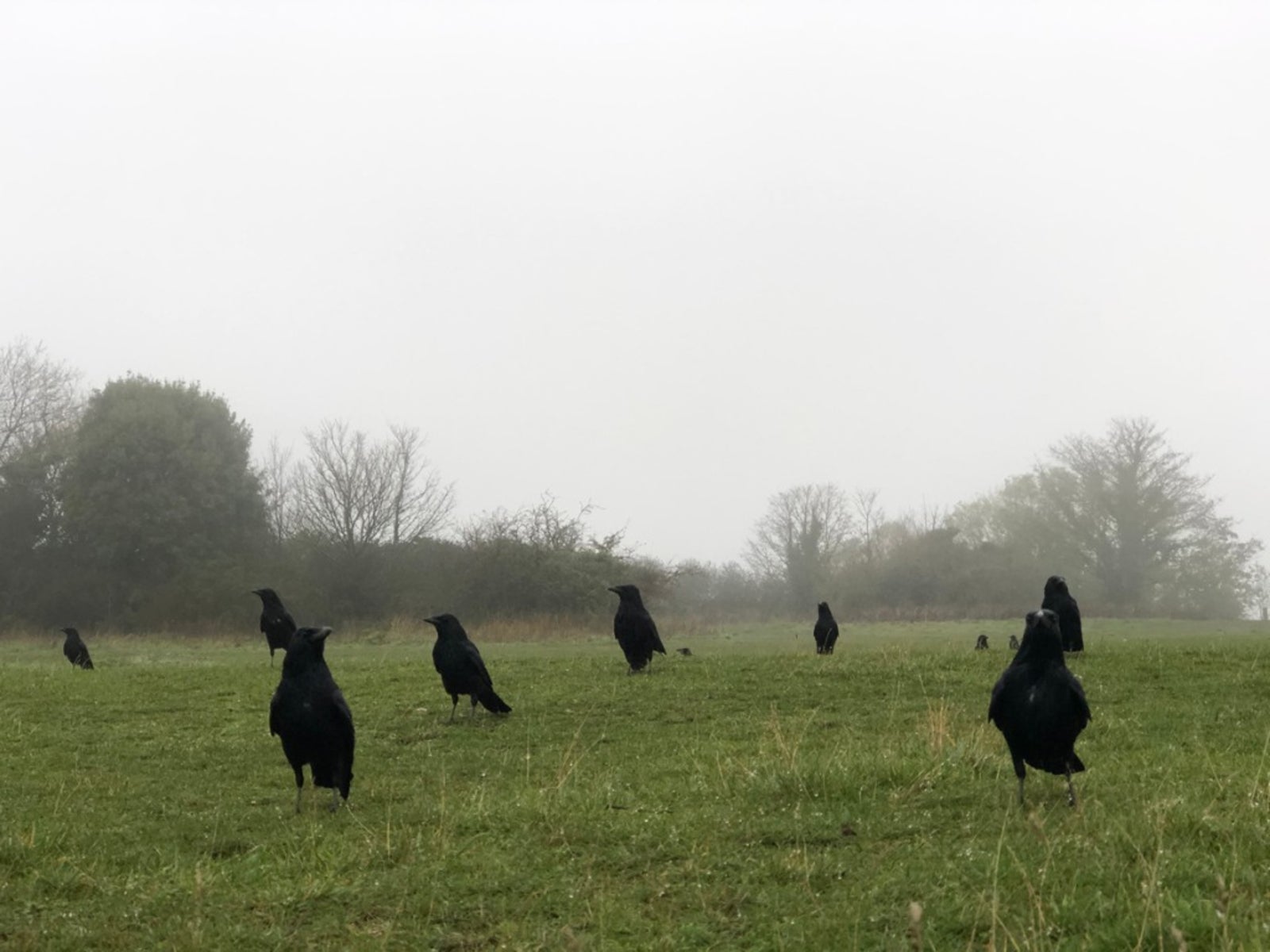Crow Damage To Lawns – Why Are Crows Digging In Grass

We’ve all seen small birds pecking the lawn for worms or other delicacies and generally there is little to no damage to turf, but crows digging in the grass are another story. Lawn damage from crows can be disastrous for those that strive for that picture perfect golf course-like turf. So what is it with grass and crows and can crow damage to lawns be repaired?
Grass and Crows
Before we discuss how to manage crow damage to lawns it is a good idea to know why the crows are attracted to the grass. The likely answer of course is to get at some delicious bugs.
In the case of crows digging in grass, they are looking for the chafer beetle, an invasive pest imported from Europe. The chafer beetle’s life cycle is around a year during which time nine months are spent as grubs feeding on your lawn. From August through May they feast on the fibrous roots while waiting to pupate to adult beetles, mate, and start the cycle all over again.
Given that chafer beetles are invasive and can do their own serious damage to lawns, the question of how to eradicate crow damage to lawns might be a moot point, since the crows are in actuality doing a service by dining on the invasive grubs.
How to Stop Lawn Damage from Crows
If you rather like the idea of crows ridding your grass of invasive grubs, the best bet is to allow the crows their free for all. The grass may look a mess, but grass is actually quite difficult to kill and will likely rebound.
For those who can’t stand the idea of lawn damage from crows, there are a couple of solutions. Proper lawn care in the form of raking, thatching, aeration, fertilization, and watering while at the same time mowing judiciously will keep your lawn healthy thus far less likely to be infiltrated with chafer grubs.
Also, the type of lawn you choose will help to deter chafer grubs ergo crows digging in grass. Avoid planting monoculture turf grass. Instead opt for diversified grasses that help to encourage a healthy ecosystem.
Gardening tips, videos, info and more delivered right to your inbox!
Sign up for the Gardening Know How newsletter today and receive a free copy of our e-book "How to Grow Delicious Tomatoes".
Avoid Kentucky bluegrass which needs too much water and fertilizer and focus on red or creeping fescues, drought and shade tolerant grasses that thrive in infertile soils. Fescue grasses also have deep root systems that thwart chafer grubs. When looking for seed or sod, look for mixes that contain over half fescue along with some perennial ryegrass to speed up the growing process.
How to Stop Crows Digging in Grass
If the idea of replacing sod or reseeding isn’t going to work for you, then nematodes might be your answer to keeping the crows from digging in grass. Nematodes are microscopic organisms that are watered into the grass in the summer. They then attack the developing chafer larvae.
For this option to work, you must water the nematodes in during the end of July to the first week of August. Moisten the ground prior and then apply the nematodes in the evening or on a cloudy day. A proven biological control, nematodes are sure to stop the crows from digging in the grass.

Amy Grant has been gardening for 30 years and writing for 15. A professional chef and caterer, Amy's area of expertise is culinary gardening.
-
 Looking For Plants To Give You The Soft And Fuzzies? Try These 5 Fuzzy Leaf Plant Options
Looking For Plants To Give You The Soft And Fuzzies? Try These 5 Fuzzy Leaf Plant OptionsLovers of texture, drama, silver foliage and tactile plants will adore these special sensory garden additions. These fuzzy leaf plant options will leave you all aglow
By Susan Albert
-
 Get Ready For A Summer Of Hummers! Grow These Full Sun Hummingbird Plants and Flowers
Get Ready For A Summer Of Hummers! Grow These Full Sun Hummingbird Plants and FlowersIf you’re lucky enough to enjoy a sunny backyard, make sure you are maxing out on your pollinator opportunities and grow these full sun hummingbird plants and flowers
By Tonya Barnett